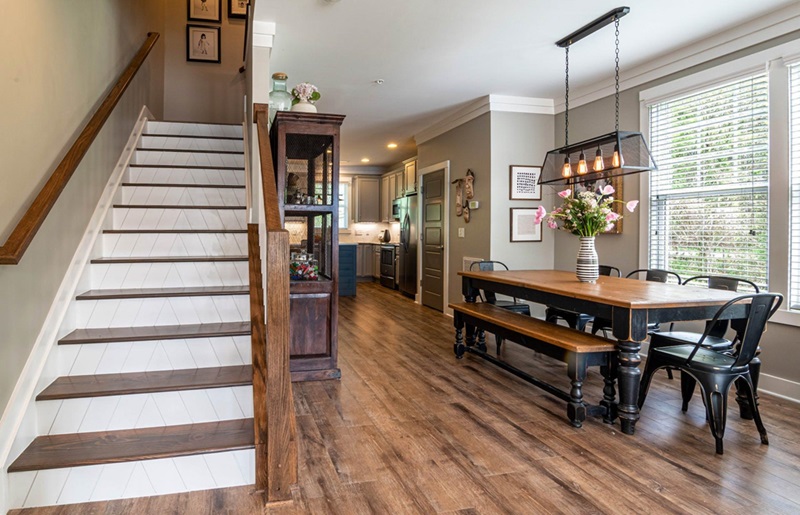Smart Living, Smart Comfort: 4 Features of Advanced Climate Control Systems

From antiquated techniques to advanced systems that blend in well with our contemporary lifestyle, the development of household climate control systems have seen a fascinating progression. People have always tried to regulate the temperature in their homes, and as comfort and efficiency have become more important, new inventions and technological developments have been made at every turn.
It is impossible to overestimate the importance of modern homes having sophisticated climate control technologies. Solutions that are intelligent, energy-efficient, and customized are in high demand as our lives get faster and more connected.
Let’s dive into the rich history of home temperature control, examining key turning points in its development and emphasizing the critical role that cutting-edge features play in influencing how we interact with our living environments today.
Here are 4 features that make advanced climate control systems in homes exceptional.
1 – Smart Thermostats
Smart thermostats provide homeowners never-before-seen levels of convenience, control, and energy economy in home climate management systems. They constitute a revolutionary leap. Instead of just letting customers set a fixed temperature, smart thermostats combine data analytics, connectivity, and state-of-the-art technology to provide a more automated and customized approach to climate control.
Smart thermostats employ data analytics, networking, and the latest technology to provide a more automated and customized approach to climate regulation than standard thermostats, which only allow users to select a static temperature.
The capacity to be controlled remotely is one of the most notable advantages of smart thermostats. From any location with an internet connection, customers may monitor energy use, set temperature options, and get real-time data using specialized mobile apps or web interfaces.
Interoperability with other linked devices is made possible by the smooth integration of smart thermostats into larger smart home ecosystems. When a thermostat is coupled with speech-activated assistants like Google Assistant or Amazon Alexa, customers may operate their thermostat using voice commands, making home automation easier to understand and more efficient.
Smart thermostats are expected to become increasingly valuable in the constantly changing home climate control landscape as advances in technology occur.
2 – Air Management
Modern home climate control features have become essential, and advanced air filtration systems are no exception. These systems handle more than just temperature control; they also take care of issues with humidity, general ventilation, and indoor air quality.
Humidity control features are an integral part of contemporary climate control systems, and they aid in preventing problems like airborne dust mites, proliferation of mold, and breathing issues. These devices improve inhabitants’ well-being and foster a healthier indoor environment by controlling humidity levels. By absorbing and exchanging heat between entering and departing air, these devices provide a constant flow of fresh air while also encouraging energy efficiency.
When having your abode constructed, speak with your home builders to have these set in the proper place. Ask residential and commercial roofing contractors for tips regarding roof ventilation properties.
3 – Energy Conservation
Conventional HVAC (heating, ventilation, and air conditioning) systems can contribute significantly to energy usage. Power-efficient innovation into heating and cooling systems is becoming commodious to the development and use of modern climate control methods as people’s awareness of their impact on the environment and energy usage grows.
Heat pumps are energy-efficient choices for both cooling and heating, especially the more technologically advanced models. For many homeowners, the long-term reductions in energy use outweigh the possibly higher initial installation costs.
Zoning features are frequently included in energy-efficient systems, enabling householders to designate separate divisions with different temperature settings inside their living areas. In this manner, just the occupied areas receive heating or cooling, saving energy on empty spaces and delivering customized comfort where it’s needed.
4 – User-Friendly to All
Ensuring a seamless experience for people of all ages and technological backgrounds is the ultimate goal. Simplicity and intuitiveness are given priority in user-friendly interfaces. Without requiring a great deal of technical knowledge, homeowners can easily access and modify settings thanks to touchscreen displays, unambiguous iconography, and simple menus.
Users of sophisticated climate control systems may make customized schedules according to their regular activities. Homes may maximize comfort and save energy use by avoiding needless heating or cooling with controlled settings.
There are temperature control systems which permit you to configure up many user profiles, each with different settings and preferences. This lets each member of the household adjust their climate control experience, which is especially useful in homes that have diverse tastes.
_____________
SMART LIVING, SMART COMFORT
The combination of these elements creates a clear picture of homes that prioritize increased comfort, energy efficiency, and convenience. This is particularly fitting in today’s rapid technology advancement. By availing full advantage of the opportunities these contemporary temperature control systems present, we can develop homes that not only fit our requirements but also promote a more sustainable and peaceful coexistence with the environment.
The expanding field of residential climate control systems promises an even more proficient and integrated future in which our houses become efficient, caring, and distinctive havens rather than just places to sleep.